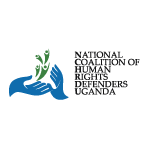- October 30, 2017
- Posted by: hrdcoalitionAdmin
- Category: News Updates

The National Coalition of Human Rights Defenders (NCHRD-U) together with SAF Teso organised a one day engagement on regional coalition building in Kumi District.on 26th/07/2017 under the theme “Teso sub region: HRDs committed to provide a unified voice and coordinated focus in addressing protection needs for HRDs.
The engagement was attended by 32 Human Rights Defenders, 14 being men and 18 women who came from areas of Kumi, Kachumbala, Serere, soroti, Amuria, Katakwi, Bukedia Kaberamaido, Paliisa and Ngora. The participants engaged in the HRD protection programme, the legislative programme and the the challenges and threats emerging in the Teso sub region.

Amongin Rose, the coalition’s sub-regional focal person said she had been in the coalition’s capacity building workshops and this built her understanding of the HRD protection program. Throughout the engagement she emphasized that the NCHRD-U utilizes the available expertise in the coalition membership in addressing challenges of HRDs at risk. Out of this, a functional referral network system was discussed for later establishment.
She encouraged participants to communicate to the Secretariat in case anyone is threatened,,at risk or even when making referrals to the coalition and even to share the contacts amongst their networks.
James Nkubi facilitated a discussion on the legislative environment for HRDs He discussed the legal prohibitions that HRDs should watch out for and gave the following key areas for HRDs to thrive
- Organizational abilities in collectivism and solidarity assembly suggesting that laws available should give room for this.
- Should have access to information because advocacy rotates around information.
- Sensitive information with in ones docket should be safe since HRDs operate on oversight issues.
- The mode of work of HRDs is a middle ground between the state and its citizens or subjects. As such HRDs need to work as networks and avoid acting as an individual person or organization.
He also hinted on Anti-Terrorism Act (2002), Penal Code Act (1950 amended in 2007) that still hold provisions that continue to be employed by state agents in clamping down on freedom of expression of HRDs.and further encouraged HRDs to register their organizations and also work as networks.

Mr. Opedum Robert facilitated a discussion on the importance of the coalition to them and outlined
ADVOCACY AND PUBLIC ENGAGEMENTS.
1. In this, NCHRDU enhances advocacy and public engagements to secure recognition of HRDs through the following ways.
- Collective advocacy, coordination and joint leaning.
- Engaging partners and stake holders on local and regional policies on security and safety of HRDs. for example in the UPR it heads the HRD cluster were the outcomes of the engagement are aired out on international levels.
- Strengthening the capacity of the members in advocacy and policy analysis skills. This is done by carrying out legal compliance trainings and meetings to discuss about the laws that tend to shrink the Human rights defenders space. E.g. POMA and the NGO act.
2. It provides a platform for networking.
- NCHRDU has thematic working groups which are comprised of HRDs working in the fields of Oil & extractives, women, minorities, journalist and pastoralists. This brings together HRDs who do similar work and share experiences and practical solutions.
- Also through the Annual general meeting, NCHRD-U fosters continued leaning among its members.
NCHRD-U TRAINS ITS MEMBERS.
Through its capacity building program, NCHRD-U strengthens the capacity of its members with security management and legal compliance trainings. This improves the protection, safety and security of HRDs at both individual and organizational level hence a secure working environment.

